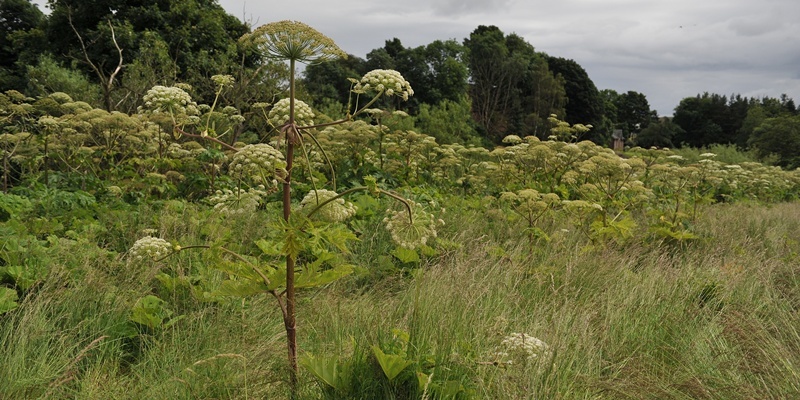Courier country is under siege from the worst attack of dangerous giant hogweed in a generation.
Watercourses, railway embankments and open green spaces have been infested with the voracious menace that has spread at a prolific rate because of the wet summer.
In Dundee, the plant has wrapped its tentacles around the city from the Dighty valley to the railway line, and areas to the west, north and south are also in its grasp.
The problem was summed up by the environment department of Dundee City Council, whose spokesman said: ”We have not seen conditions like these in 30 years. The growth of hogweed has been phenomenal.”
The noxious weed can grow as high as seven metres. Touching it leaves blisters and scars that can last several months, and contact with the eyes can cause blindness.
People should keep away from it and protective clothing should be worn when tackling it.
Hogweed grows and re-grows so rapidly that it is very difficult for landowners to eradicate. Its roots can grow several metres making digging out impractical, and experts say effective spraying with chemicals can only be done at two specific periods a year to prevent the plants from setting seed.
In Scotland, an organisation with a major giant hogweed problem is Network Rail. The verges alongside its 4,500 kilometres of railway lines are perfect for its growth.
”It is so big a problem that we have to tackle it on a priority basis and tackle it persistently because it can take about three years to get rid of,” said a spokesman.
”It spreads aggressively and you can think you have finished treating your area only to return later and find it has come back in from your neighbour’s property.
”We encourage the public to report giant hogweed on our property to our helpline, on 0845 711 4141, to ensure we know where it is and help us prioritise our work in dealing with it.”
Dundee City Council has already tackled giant hogweed once this year and a second effort is about to start. In a recent incident in Fife, giant hogweed caused severe burns to children’s hands.
Linda Turner of Fife Council’s protective services department said: ”I would recommend that people avoid contact with this plant. You can obtain advice on how to eradicate it from www.invasivespeciesscotland.org.uk.
”Scotland’s wet summer has helped the spread of giant hogweed but it may also have helped to minimise its impact at least so far.”
A Perth and Kinross Council spokesman said: ”While we do not consider we have a major issue with giant hogweed or Japanese knotweed on our land, Perth and Kinross Council will carry out treatment to destroy any areas of these invasive plants on a regular basis where required, in line with our statutory duties.”
